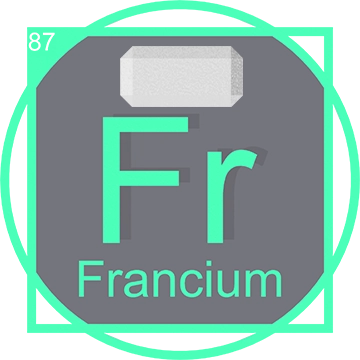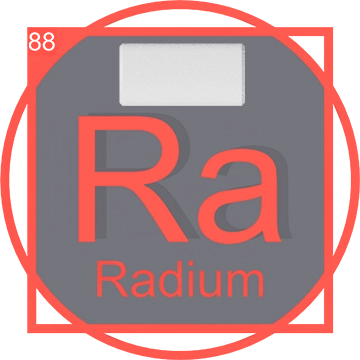Francium (Fr): The Elusive Element of the Periodic Table
Introduction And Discovery to Francium (Fr)
Francium, with the chemical symbol Fr and atomic number 87, stands out as one of the most intriguing elements in the periodic table, part of the alkali metals. Discovered in 1939 by Marguerite Perey at the Curie Institute in Paris, Francium is notable for being the heaviest known alkali metal and one of the most elusive and radioactive naturally occurring elements. Its discovery marked the completion of mankind’s discoveries of naturally occurring elements, filling a long-speculated gap in the periodic table.

This highly radioactive element has a very short half-life, making it rare and limiting detailed study of its properties. Found in the Group 1 of the periodic table, Francium exhibits typical characteristics of an alkali metal, such as extreme reactivity, especially with water, and a strong tendency to lose its single valence electron to form ions with a +1 charge.
Despite its brief presence in observable quantities and a lack of substantial commercial applications, Francium's rarity and the challenges associated with its study make it a subject of ongoing scientific research, particularly in areas related to nuclear physics and chemistry.
Scientific and Technological Applications
Due to its scarcity and high radioactivity, Francium has no significant commercial applications. However, it is used in scientific research, particularly in the study of atomic structure and nuclear reactions. Its potential use in future technology could involve applications in medical diagnostics and cancer treatment, exploring its behavior as a radioactive tracer.
Theoretical Representation of Francium

This image offers a conceptual visualization of Francium, depicted as a solid metal with a lustrous, silvery finish. The illustration showcases a chunk or ingot of Francium on a laboratory surface, emphasizing its reflective and metallic properties. Represented here in its purest hypothetical form, Francium is characterized as a dense, highly reactive alkali metal, typically unseen in such quantity due to its extreme rarity and radioactivity.
Conclusion
While Francium is not widely used in current technologies, its unique properties continue to make it an object of scientific fascination. Researchers hope that further study will unlock more information about this rare and elusive element.
How Francium is Produced

Francium is not mined from any natural source due to its extreme rarity and radioactivity. It is produced synthetically in very small amounts through the bombardment of lighter elements like thorium or radium with neutrons in nuclear reactors. This process involves complex nuclear reactions where these elements absorb neutrons and undergo beta decay, eventually forming francium.
Current Applications
Today, the use of Francium is primarily confined to scientific research due to its scarcity and high radioactivity. It is utilized in experiments related to superheavy elements and in studies exploring the behavior of alkali metals in the periodic table. Its potential as a tracer in biochemical research is also being investigated, given its chemical similarity to cesium.
Future Prospects

Looking forward, the scientific community is intrigued by the potential uses of Francium, particularly in the field of nuclear medicine and targeted cancer treatments. Researchers are exploring the possibility of using Francium's isotopes in brachytherapy, a form of radiation therapy, due to their high energy alpha emissions which could be effective in treating small, localized cancers.
Conclusion
Although Francium is currently not used widely outside of experimental research, its future in scientific applications holds promise. Continued studies and breakthroughs in handling and stabilizing radioactive elements could open new pathways for utilizing Francium in advanced scientific and medical fields.













